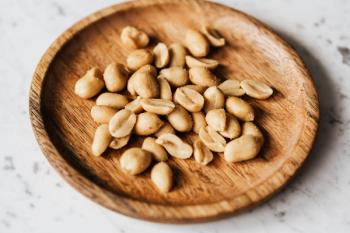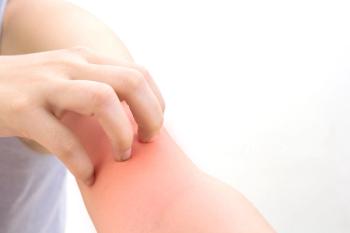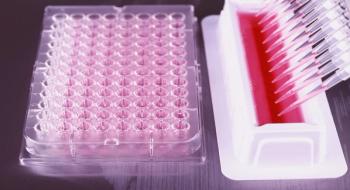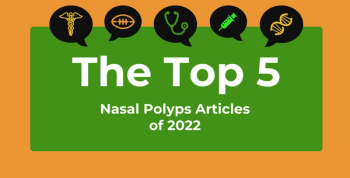
Inflammation
Latest News

Treatment Improves Outcomes in Patients With CRSwNP, Features of Obstructive Lung Disease

Patients With EoE Benefit From Systemic Treatment Regardless of Esophageal Dilation History
Latest Videos

CME Content
More News

Investigators wanted to assess endoscopic appearance, wall thickness, histology, and dysphagia score for eosinophilic esophagitis (EoE).

A study explored outcomes among patients living with newly diagnosed eosinophilic esophagitis (EoE) who demonstrated lack of histological response following proton pump inhibitor (PPI) treatment.

Health status and health-related quality of life (QOL) outcomes were compared between patients with severe cases of chronic rhinosinusitis with nasal polyps (CRSwNP) and a general patient population.

Exposure to pets during fetal development or early infancy was associated with reduced instances of food allergies in young children, with different pet exposures potentially reducing the incidence risk of certain allergen types.

A research letter highlighted recent findings that iREACH educational intervention training may be helpful in preventing peanut allergies.

Despite the approval of dupilumab (Dupixent) in September 2022, there is an ongoing dearth of clinically effective treatments for prurigo nodularis, prompting the present investigation of the monoclonal antibody for the chronic inflammatory skin condition.

Subanalyses of data from the LIBERTY PN-PRIME and LIBERTY PN-PRIME2 studies illustrate how dupilumab for prurigo nodularis can better patient outcomes, including quality of life and symptom burden.

The Skin Pain Numeric Rating Scale, Worst-Itch Numeric Rating Scale, and Dermatology Life Quality Index were evaluated for their content validity, fit-for-purpose, and psychometric and measurement properties among patients with the chronic skin disease being treated with dupilumab.

Using a clustering algorithm, researchers were able to identify inflammatory and noninflammatory subsets of the disease, which may account for varying responses to certain treatments.

The supplemental Biologics License Application was filed for the new indication for dupilumab, which is already approved to treat atopic dermatitis, asthma, chronic rhinosinusitis with nasal polyposis, and eosinophilic esophagitis.

The 2 therapies, a 1-food and a 6-food elimination diet both used for eosinophilic esophagitis (EoE), were compared for outcomes after 6 weeks.

In this analysis, evidence was reviewed for the effectiveness of intranasal corticosteroids, biologics, and aspirin therapy after desensitization use among patients who have chronic rhinosinusitis with nasal polyposis (CRSwNP).

This review and meta-analysis included 34 studies covering 1762 patients, and investigated the efficacy of 4 varieties of dietary treatment for eosinophilic esophagitis (EoE).

Such cases of eosinophilic esophagitis (EoE) are rare, but they can be treated with the typical therapies for EoE.

Known to be a contributing factor to polyp development at high levels, periostin’s potential as a biomarker for eosinophilic chronic rhinosinusitis (ECRS) severity was investigated in a new study in which outcomes were compared between patients who had ECRS and those with non-ECRS.

Outcomes were investigated among 541 patients who had chronic rhinosinusitis; they accounted for 435 primary surgeries and 106 revisionist surgeries.

Although it is well studied in adult patients, there is a lack of research on eosinophilic gastrointestinal disorders (EGIDs) among pediatric patients; a recent study aimed to add to the clinical knowledge of EGIDs in younger patients.

The utility of and adherence to follow-up exams for potential recurrence of chronic rhinosinusitis with nasal polyps (CRSwNP) was investigated among 60 patients who had undergone functional endoscopic sinus surgery.

Disease outcomes in chronic rhinosinusitis with nasal polyps (CRSwNP) that related to inflammation and endotype specification were goals in this new study that evaluated the biomarker potential of S100A4.

Levels of certain biomarkers of inflammation in prurigo nodularis were evaluated between patients with and without the chronic inflammatory skin disorder, with the goal of showing potential for precision medicine in prurigo nodularis.

With previous research showing that having a history of infection can lead to loss of autoimmunity, Swedish researchers set out to investigate a potential link between prior infection and development of eosinophilic esophagitis (EoE).

This year’s top 5 most-viewed videos include topics on eosinophilic esophagitis (EoE), cancer screening awareness, and racial/ethnic and socioeconomic barriers to care.

Nasal polyp development, treatment, and recurrence were topics up for discussion in this year’s most popular nasal polyps–related content.

The biomarker potential of Charcot-Leyden crystals in nasal tissue was investigated over 2 years in 110 patients with diagnosed chronic rhinosinusitis with nasal polyps (CRSwNP).

This study was prompted by recent findings that ultra-low IgE levels (IgE <2.5 kU/L) may be linked with a higher risk of cancers.

















































